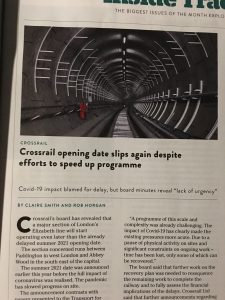Continuous improvement (CI) is a philosophy and practice focused on gradually enhancing processes, services, and outcomes. In the private sector, CI is often the driver of innovation and efficiency, but local authorities and public sector organisations frequently struggle to adopt or maintain CI over the long term. Despite public interest in efficient, high-quality services, local authorities often find themselves constrained by budget limitations, bureaucratic processes, and political dynamics that impede long-term improvement efforts. Examining these challenges reveals why CI can be particularly elusive in the public sector.
One core issue for local authorities is funding. Unlike private businesses, which can reinvest profits into improvement efforts, local authorities operate within tight, pre-allocated budgets that leave little room for experimentation or development. When funds are constrained, authorities can only make short-term decisions to address immediate needs, sidelining CI initiatives that require a longer horizon to bear fruit. The situation has worsened recently, with budget cuts and economic challenges intensifying pressure on local authorities. For instance, a 2023 report in the UK highlighted how local councils faced severe financial strain, with several authorities declaring effective bankruptcy, like Birmingham City Council. Under these conditions, prioritising CI becomes nearly impossible, as councils focus on essential service delivery instead.
Additionally, bureaucracy within local authorities creates a rigid, rule-based environment that resists change. Continuous improvement thrives in adaptive, flexible settings where employees can identify and implement changes. In contrast, local authorities often operate within a hierarchical structure, where every adjustment requires multiple layers of approval. This phenomenon is especially evident in urban planning, housing, and public infrastructure projects, which can take years to complete due to bureaucratic constraints. For example, San Francisco’s prolonged and costly delays in affordable housing projects illustrate how local government inefficiencies can stifle progress. Continuous improvement efforts can be hard to sustain in such an environment, where even minor procedural changes become complex, time-consuming, and sometimes politically fraught undertakings.
Political factors also play a significant role. Local authorities are accountable to the public, whilst the latter influences decisions through electoral cycles and public opinion. However, political priorities can shift rapidly, especially with changing administrations, which can interrupt or even abandon long-term CI initiatives. Projects initiated by one leader may be deprioritised by the next, leading to inconsistency in improvement efforts. This practice is widespread in environmental initiatives, infrastructure projects, and education reform. The regular cycle of political change can interrupt CI progress, as local authorities frequently change priorities to align with new mandates. For instance, after Brexit, many local UK councils shifted focus to address new regulatory and economic challenges, setting aside previously prioritised local projects.
Another barrier to CI in local authorities is difficulty measuring success and securing accountability. While private companies measure improvement through key performance indicators (KPIs) and financial results, success in public services is less tangible. Improvements in public safety, education, or infrastructure quality are challenging to quantify, leading to fewer incentives for implementing CI initiatives. Additionally, without clear performance indicators, it becomes difficult to allocate resources effectively, making long-term CI efforts less likely to receive the support they need. In many cases, only crises or significant service failures prompt local authorities to re-evaluate their processes, often resulting in reactive rather than proactive improvements.
Resistance to change is a significant obstacle for local authorities. Long-serving staff and entrenched practices can create an environment where change is perceived with scepticism or outright resistance. Unlike the private sector, where a focus on competitive advantage can drive change, local authorities operate within a monopoly on public services. This lack of competitive pressure can lead to complacency and a culture resistant to continuous improvement. Examples from local councils in the US and the UK have shown that entrenched habits and routines often hinder the adoption of more efficient, technology-driven solutions, with some councils taking years to digitise essential services.
Local authorities’ challenges—funding constraints, bureaucratic inflexibility, shifting political priorities, difficulty measuring success, and cultural resistance—create significant obstacles to continuous improvement. While some local authorities have made strides in certain areas, the long-term nature of CI requires consistent commitment, resources, and a culture that values adaptability. Overcoming these barriers requires local authorities to invest in flexible management structures, establish clear KPIs, and nurture a culture supporting incremental change. Until then, the lack of CI will continue to hinder the efficiency and effectiveness of public sector services, ultimately impacting the quality of life for the communities they serve.






